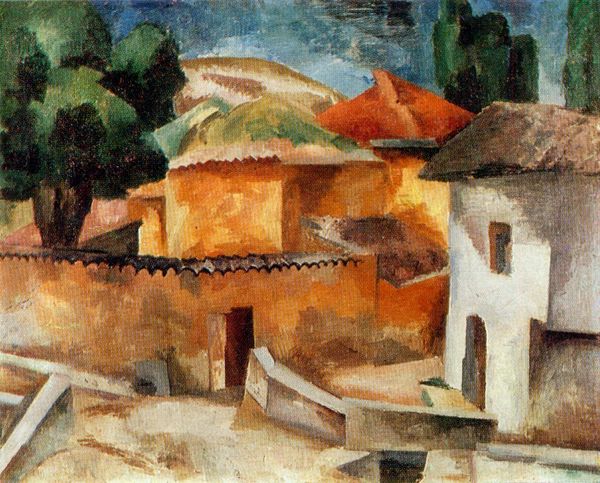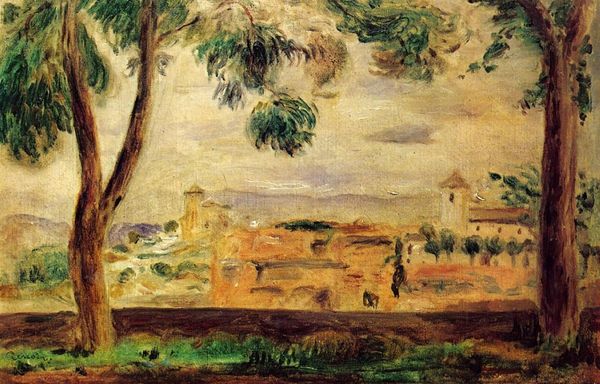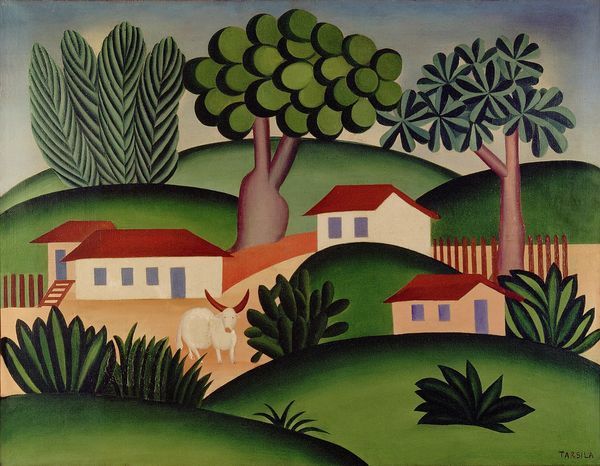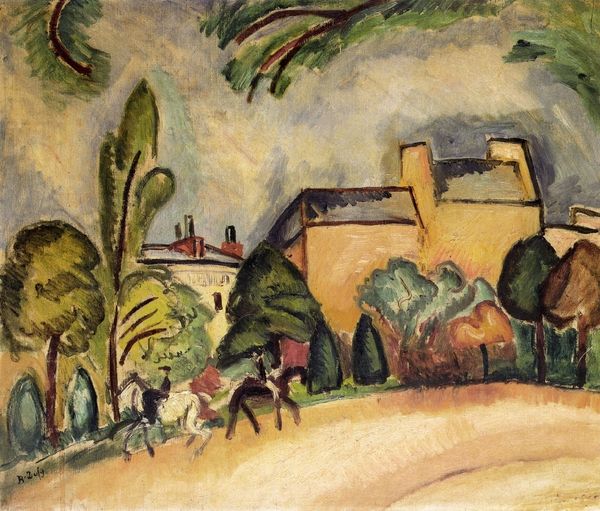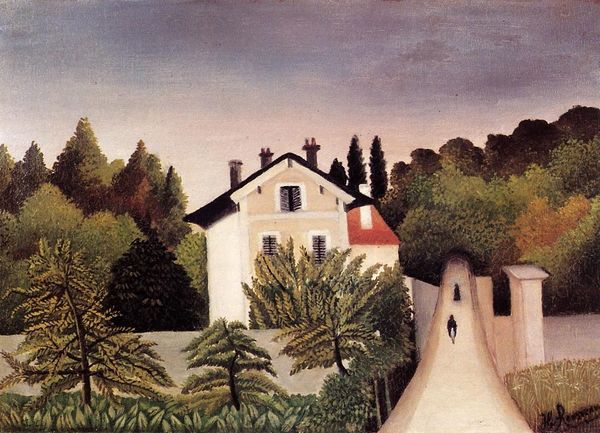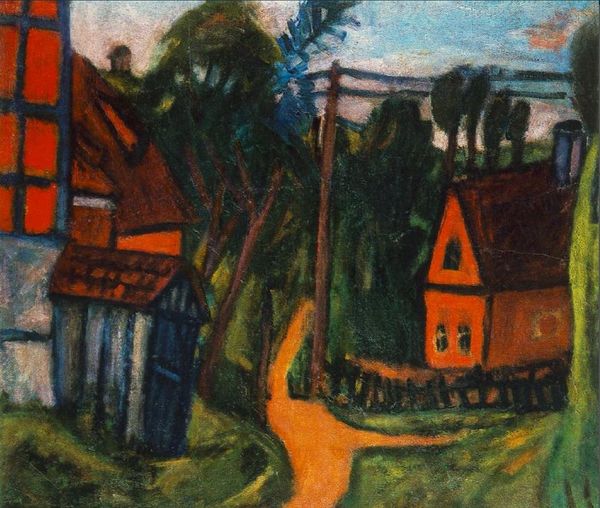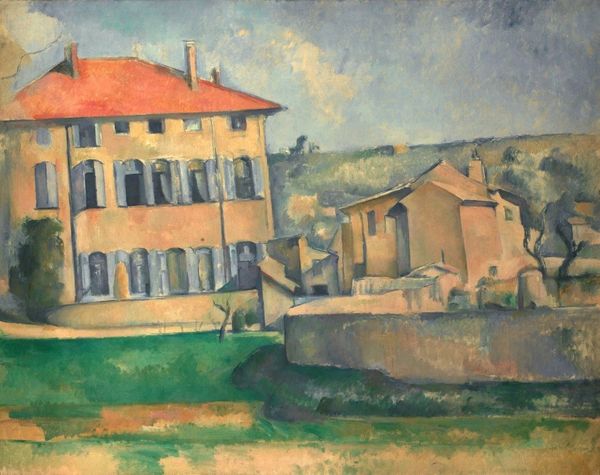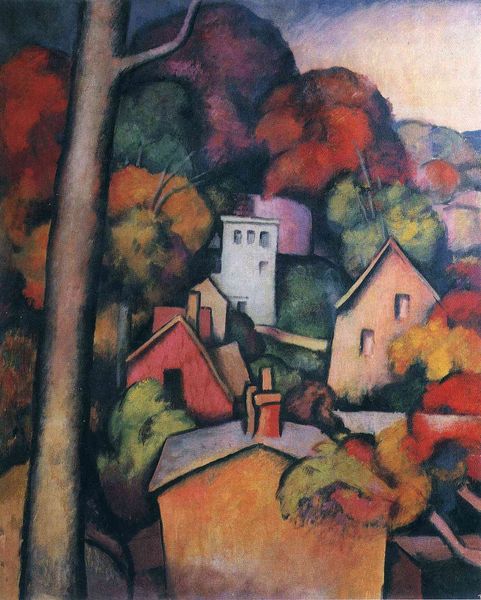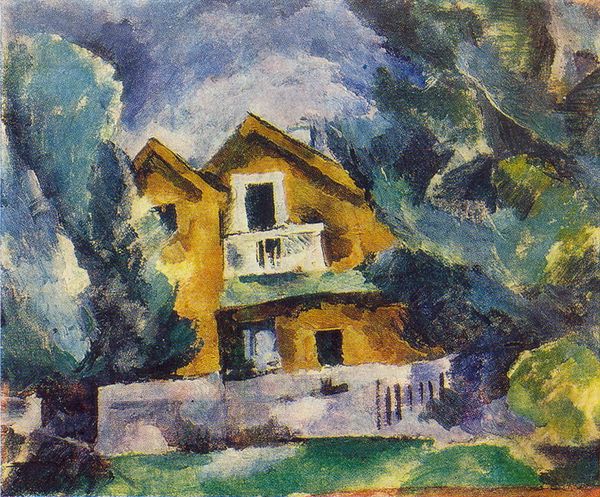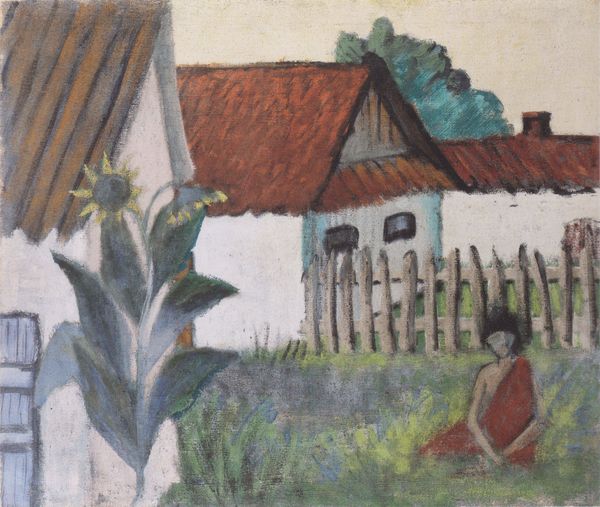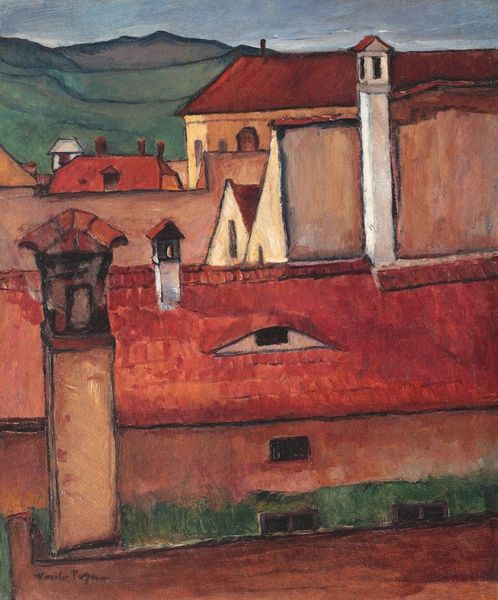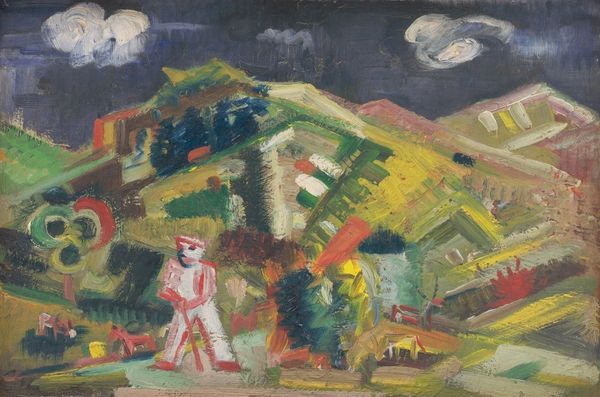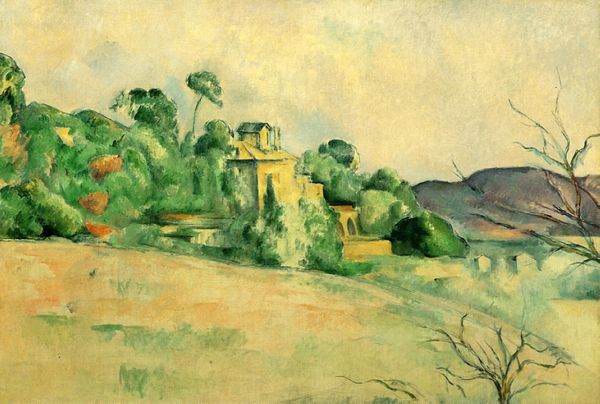
painting, gouache, acrylic-paint
#
gouache
#
cubism
#
painting
#
gouache
#
landscape
#
acrylic-paint
#
mixed media
#
watercolor
Dimensions: 53.5 x 80 cm
Copyright: Pablo Picasso,Fair Use
Editor: We are looking at “Landscape,” a 1928 painting by Pablo Picasso, using gouache, watercolor, and mixed media. It's lighter than many other works of his that I’ve seen. It feels... whimsical, almost dreamlike. What do you see in this piece? Curator: The apparent lightness shouldn't lull us into complacency. Let’s consider the era. In 1928, the world teetered on the edge of economic collapse and burgeoning fascism. What might a "landscape" represent at such a precarious historical juncture? Editor: I hadn’t thought of that. Maybe escapism? Curator: Perhaps, but escapism isn’t apolitical. Think about the fractured representation. Is it merely a stylistic choice of cubism, or does it mirror a society grappling with fragmentation? Are those simplistic architectural forms, in their stark, almost childlike rendering, indictments of burgeoning modernism, or the instability of home, identity and place? What are your thoughts on the use of these materials in expressing these ideas? Editor: Well, gouache and watercolor feel less... permanent than oils. It contributes to the dreamy, transient feel. Almost like a memory. Curator: Exactly. It evokes fragility, challenging notions of permanence and stability so frequently linked to traditional landscapes. Picasso, even in his seeming departures, persistently questioned dominant societal narratives. So this is less of a pleasant daydream and more a dream burdened by historical realities and the anxiety of modernity, isn’t it? Editor: That makes me see the painting in a whole new light! It is much more thought-provoking than I initially understood. Thanks! Curator: Precisely, art challenges and provokes. Looking beneath the surface helps reveal how it echoes its time.
Comments
No comments
Be the first to comment and join the conversation on the ultimate creative platform.
